Guatemala's Fuego volcano eruption: 69 dead and hundreds injured as lava surge sweeps through villages
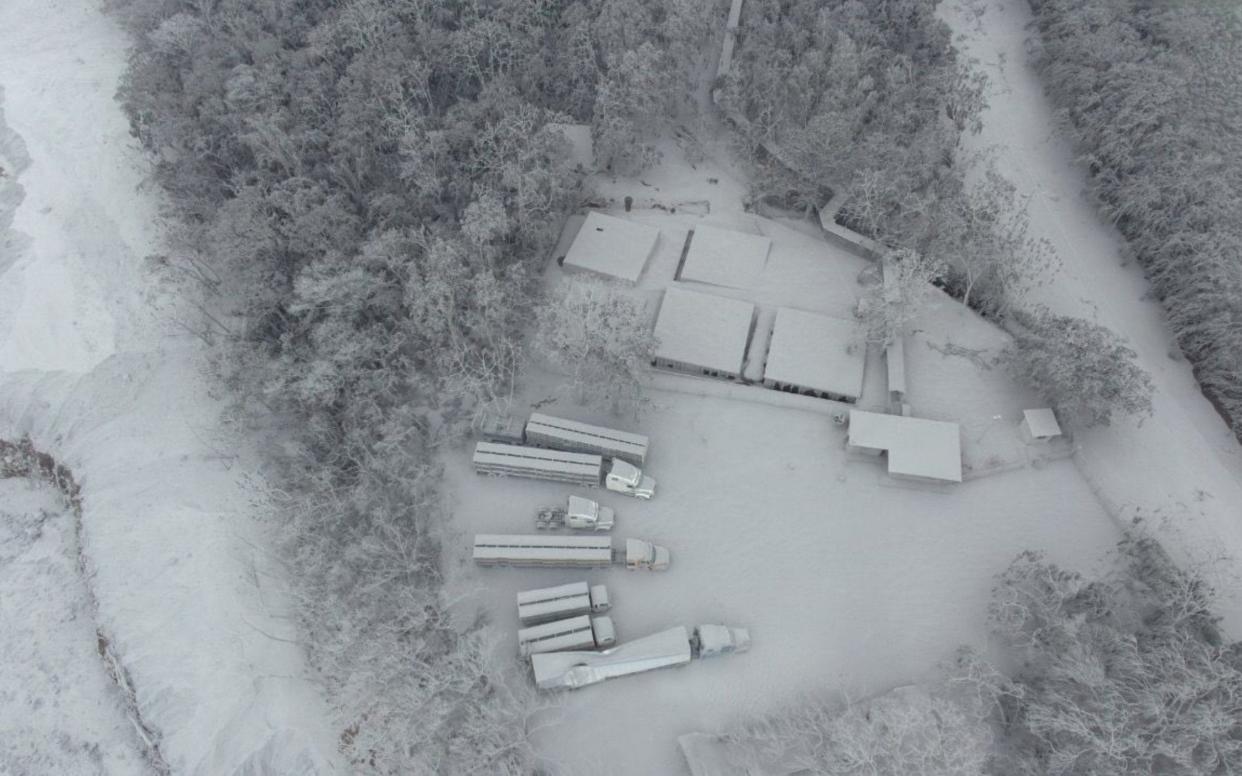
José Antonio Rivera counted to nine on the fingers of his grey ash-encased hands as he tallied relatives who had vanished in the torrent of mud and fire.
"My children are gone. There is just me, my wife, and one son left,” he told local television amid apocalyptic scenes in the shadow of Guatemala's El Fuego volcano.
The massive eruption blasted smoke more than four miles into the sky and set off a pyroclastic surge of the kind that destroyed the ancient city of Pompeii in AD 79.
Such a surge - a mixture of ash, sand, and gas - can reach temperatures of 700C and travel far faster than lava, over 100km per hour. Guatemalan villagers were caught completely off guard.
Hilda Lopez described how it swept into her village of San Miguel Los Lotes during a party.
She said: "We were at a party, celebrating the birth of a baby, when one of the neighbours shouted at us to come out and see the lava that was coming.
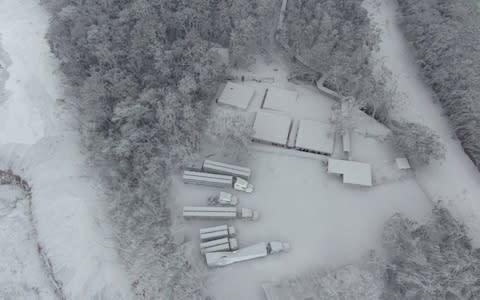
"We didn't believe it, and when we went out the hot mud was already coming down the street. My mother was stuck there, she couldn't get out."
One group of villagers gathered on a bridge to watch what they thought would be a slow lava flow, only fleeing at the last minute as the bridge was suddenly overwhelmed.
Death toll rising
On Monday night, the official death toll was 69 and expected to rise as rescue workers combed the worst affected area about 30 miles southwest of the capital Guatemala City.
The village of El Rodeo was "buried," the rescuers said. They described finding bodies so cased in ash they looked like statues.
Volcano Fuego eruption in Guatemala
Some rescuers had to return to their bases after their shoes melted. Others managed to dig 10 survivors out.
"We are looking for people who are missing, but we don’t know how many there are,” Mario Cruz, spokesman for the fire brigade, told the Telegraph.
He said six children, and their pregnant mother, had just been rescued from their home and taken to a local hospital where survivors were being treated for burns and breathing difficulties.
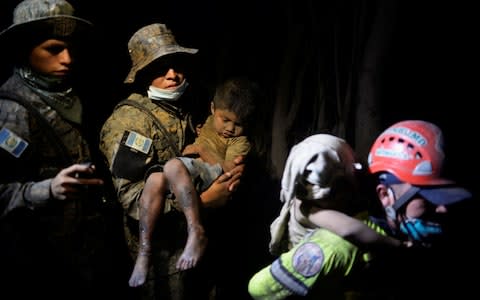
Volcan El Fuego - the "Volcano of Fire" - began erupting at 1pm on Sunday and that was immediately followed by a billowing grey cloud that filled the horizon.
Ash rained down on towns and cities across a far wider area, including the tourist city of Antigua and Guatemala City, where the airport was temporarily closed by debris on the runway.
More than 3,000 people had been evacuated to shelters.
At a makeshift morgue in the city of Escuintla, about 18.6 miles from the explosion, distraught family members came to search for their relatives among the dead.
Guatemala's Fuego volcano eruption, in pictures
Francisco Quiche, a 46-year-old welder, gave a blood sample to try to identify his son's body, though he already knew his son's fate.
After evacuating the town of El Rodeo with his family, he returned to search for his son and daughter-in-law. Peering through a hole in the wall of his son's home, Quiche saw the boy's body. He fears his daughter-in-law is dead as well.
"We had time to leave, thank God, but I am very sorry for the loss of my son and my daughter in law," he said through tears. "My son was just 22 years old, the same as my daughter-in-law, who was expecting a baby."
Mourning period
President Jimmy Morales declared three days of mourning but his government was already facing criticism for not acting sooner to start forced evacuations.
The slow reaction may have been related to the fact that Guatemalans are used to seeing El Fuego, one of Central America's most active volcanoes, spit burning material into the sky.
A small industry exists of trips for tourists who trek up an adjacent volcano and camp to watch the spectacle.
“We ran a tour on Saturday,” tour guide Camilo Toledo told the Telegraph. “It looked like it was a bit more active than normal but what happened on Sunday was a massive surprise.”
Eddy Sanchez, the director of the country’s seismology and volcanology institute, said that El Fuego has an average of between 10 and 16 “explosions” a day.
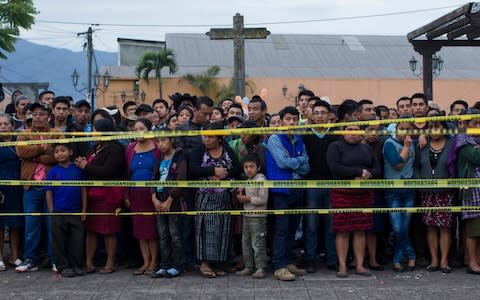
He said last year the volcano erupted 12 times. The biggest one, in February this year, sent ash a mile into the sky.
Unexpected tragedy
Sunday’s eruption, however, was on a completely different scale.
He told The Telegraph it was still much smaller than the last really major eruption in 1974, although that one did not cause any deaths.
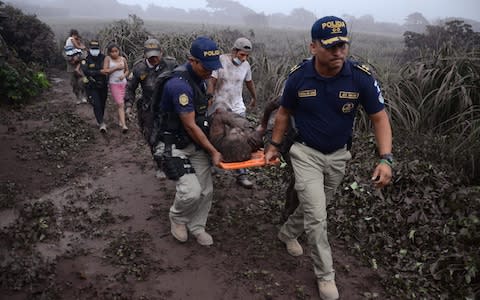
He blamed the greater destruction on the fact rivers were already overflowing and filled with mud, which meant that the pyroclastic flow became far more dangerous.
"The rain made it far more deadly," he said. "It also meant that the evacuation effort was much more difficult."
The task of retrieving bodies on Monday was hindered by another eruption and an apparent landslide on the southern slopes of Fuego triggered fresh evacuations.
CONRED shared a photo showing the flows of gas and mud sweeping down a mountainside and across a broad valley, engulfing a small village.
"The landscape on the volcano is totally changed, everything is totally destroyed," government volcanologist Gustavo Chigna said on local radio.
David Rothery, a volcanologist with The Open University, said: "Pyroclastic flows may be hot enough to glow like molten lava. They can travel further, as well as much faster, than lava flows.
"This is the phenomenon that claimed many lives during the famous AD 79 eruption of Vesuvius that destroyed Pompeii.
"Given the (previous) activity it might have been wise to declare an evacuation zone around the volcano."

